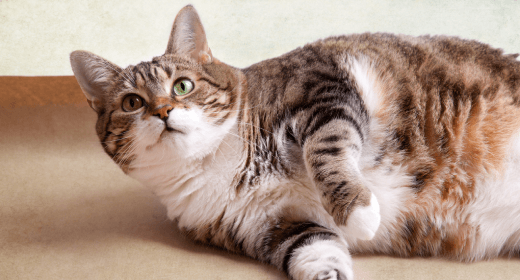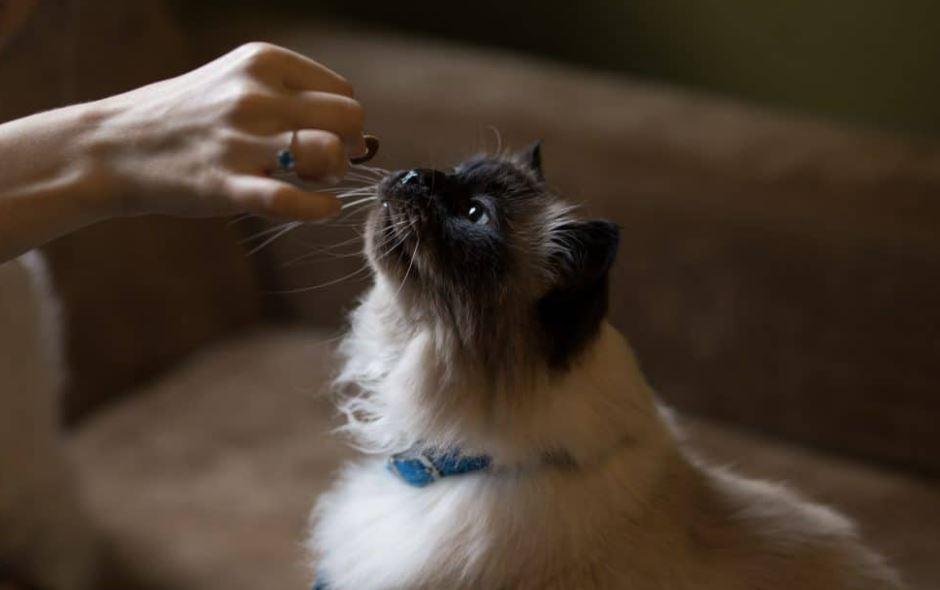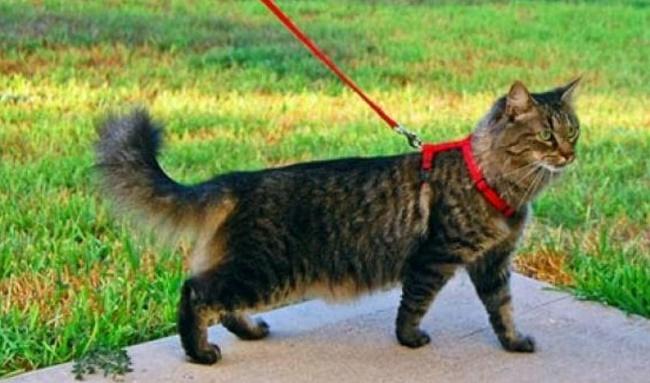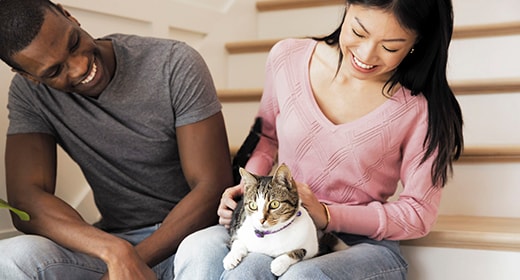

Let’s start by asking – would you realize if your cat needed to cut down?
You know your cat is purr-fect. It’s fluffy and has a paunchy belly. But so, what? It could also imply that it is perfectly healthy. Naturally, you may not understand if your fluffball is on the portly side. In fact, overweight cats now appear to outnumber those who have a healthy weight.
Overfeeding your cat is a big no-no. Even a few additional pounds can increase your cat’s risk of developing certain health conditions, such as type 2 diabetes. It may even prevent your cat from grooming itself properly. Therefore, keeping your cat in shape is crucial to maintain its health, and help it live longer and happier. Well, the good news is that by making some simple dietary and exercise changes, you can assist your overweight cat in losing weight.
Obesity is becoming more prevalent in cats, just as it is in humans. It can have long-term consequences on a cat's health, quality of life, and body functioning. Therefore, obesity in cats must be addressed immediately, as it is linked to serious health problems. Here are the risks of cat obesity:
When your cat becomes overweight, its immune system gets weakened, leaving it more susceptible to infection. This includes urinary infection as well as 'stones,' which are caused in overweight cats because they’re less active, drink less water, and urinate lesser than healthy cats.
Around 80% to 90% of obese cats require daily insulin shots as they are more likely to develop diabetes. But, when their excess weight is eliminated, diabetes can often be reversed.
When your cat’s body senses that it is undernourished, for instance, if a regular food supply is interrupted, the fat is moved from reserves into the liver to be used as energy. But a cat’s body is unable to efficiently control this process, resulting in poor liver function and liver failure.
Cats with excess weight have a harder time grooming themselves, which can contribute to skin problems.
Here is a chart for you to understand better –

After you get your overweight cat in shape, your goal must be to maintain it for its good health and longevity. Here are some things you should avoid doing to keep your cat from becoming overweight:
You should avoid free -feeding your cat to prevent it from becoming obese. Set up definite feeding times and keep treats to a minimum.

Your cat is at even more risk of becoming overweight if it does not engage in any outdoor activity. To avoid boredom and prevent weight gain, find some interesting toys, set aside playtime, and make it a priority for your indoor cat. Another approach is to go for a walk outside with your cat on a leash.

Assess how much cat food your cat truly needs with the advice of your vet, based on your cat's activity level and desired weight. Once you've calculated how much food your cat requires, measure the food for each meal. Remember that cats are little, and while the portion may appear small to you, some extra kibbles can make the difference between maintaining weight and gaining weight.

Another way to help your cat lose weight is to increase her activity. Provide cat 'trees' for climbing or teach your cat to play fetch. Buy or create your own toys that encourage exercise. Many cats enjoy chasing lights from pointers or flashlights. One ingenious owner throws her cat's dry food ration a piece at a time! Many cats enjoy learning to walk on a leash. You also can use your cat's natural hunting instinct to help her lose weight. Hide several small portions of her daily food ration around the house. If you have a multi-level home, make your cat use the stairs. Use your imagination but be cautious. Don't let a fat cat get exhausted, overheated, or out of breath. Also, keep in mind that an old cat may not be able to exercise vigorously.
Use playtime, grooming, stroking, or conversation as rewards instead of food treats. If you cannot resist the fat cat who begs for food at the dinner table, remove the cat during dinnertime. If you have a multi-cat household, the consistent winner of the food competition sweepstakes is often obese. If this is the case, separate the cats at mealtimes if possible.
Obesity is easier to prevent than to cure, but it is never too late to reverse it—though it requires long-term patience and commitment. Helping cats lose weight is a slow process. If the amount they eat is severely restricted, the cat risks other health problems.
Increased activity, behavior modification (for both you and your cat), and calorie restriction are your weapons against feline obesity. However, with all these things, it is important to expect a few setbacks and plateaus. It will take at least four months for an obese cat to lose 15% of her starting weight. At that point, have another look at your cat's body condition and go on from there.
Always check with your veterinarian first.
Eliminate all food treats.
Divide the daily food portion into several smaller meals.
Feed a diet formulated specifically for weight loss.
Weigh your cat every two weeks.
Cats should not lose more than 1% to 1.5% of initial weight per week.
Be patient and consistent!
The symptoms are:
You can treat an obese cat by helping it consume fewer calories. But before that, please consult your vet and understand the amount of weight your cat needs to shed. Also, pair some exercises along with the weight loss diet.
Obesity in cats is often linked to physical inactivity, overfeeding, long sleeping times, and indoor confinement.
You should provide canned food to your cat to help it lose weight. Cats prefer wet food to dry food, which is one of the reasons canned diet foods perform better.
If your cat is overweight, it is more likely to develop heart disease, cancer, diabetes, and high blood pressure. Excess fat has a negative effect on a cat's health and lifespan. Extra weight also puts strain on your cat's joints, which can lead to arthritis.


Bringing a new kitten home can be exciting, especially if it is your first time. The day you have been looking forward to has finally arrived and you are ready to take on your responsibilities as a cat parent! However exciting it may be to embark on this journey, a caregiver should not forget to prepare their home for a kitten’s first day and night.
Start establishing a routine during your new kitten’s first week at home. For instance, start taking it to the vet, and introduce it to friends, family, and other pets. You should also be fully prepared for its first outings once it is fully vaccinated. Lastly, kitten-proofing your home is highly recommended. Bringing a new kitten home is no different than bringing a baby home. As a caregiver, you should put away all hazardous items in the house and create a safe space for your kitten.
For caregivers who are bringing a new kitten home, this article is the ideal read! Here’s what you need to know about introducing a new kitten to your home.
There are multiple things you need to do before getting a kitty into your house. For example, you must find a credible veterinarian in your vicinity. Especially because you have to take your newborn cat to the vet as soon as you adopt it. So, let’s explore other crucial steps to take before bringing a kitten home:
Kittens are tiny and delicate; hence, anything that can hurt or harm them should be put away. Make sure you have set up a sleeping space for your kitten, a food bowl, and a water bowl. Apart from that, place one or more litter boxes around your house depending on the size of your home. Make sure you cover any sharp edges of your furniture and don’t expose your kitten to any dangerous figures. Moreover, keep harmful plants and any toxic substances out of its reach.
For the first few nights, it is normal for new kittens to be anxious. It will take some time for a kitten to get used to its new home. It is also normal for your kitten to cry for the first few nights. You can make this experience better for it by setting up a cosy sleeping space. Once it gets comfortable in the new home, the kitty can even sleep for up to 20 hours a day.
It is not recommended to suddenly change your kitten’s food. Thus, find out what it was being fed by its previous caretaker. Stick to that meal plan for a few days and then gradually start changing your kitten’s diet. The best person to give you any advice on the right diet for kitties is a vet. Visit a veterinarian to receive a comprehensive feeding chart for your feline friend’s diet. For kittens between two to 12 months of age, IAMS Proactive Health Mother And Kitten dry food is ideal. It is loaded with protein, omega-3 fatty acids, vitamins, and minerals to support healthy brain and eye development. This kitten food also contains colostrum and DHA – two essential nutrients that provide immunity and protection against diseases.
Now, let’s take a deep dive into understanding the things that must be done once you have brought the kitty home:
The first step after bringing a kitten home is to introduce your new feline friend to its new family. Kittens can feel nervous around strangers; hence, familiarising them with their new family is imperative. Ensure that the atmosphere is calm and not too loud as they tend to get anxious. Your kitten should be handled gently if being picked up by anyone. Give your kitten the space it requires and let it explore the house by itself.
If you have any other pets or more cats, introducing a new kitten to the rest of them is important. After all, they have to coexist and should get along as soon as possible. The best way to make them accustomed to each other is through scent. Keep switching sleep blankets so your pets can get used to being around each other. You can also place one pet’s towel under the other’s food dish. By doing this, all your pets will slowly get used to the new kitten.
Maintaining your kitten’s health is a priority. One of the most important things to do as soon as you bring a new kitten home is to set up a vaccination plan with the vet. Hence, make sure you visit a veterinarian at the earliest. Stay consistent with all vaccination doses for your kitten’s overall well-being. Later on, start taking your pet for regular medical check-ups. The doctor will examine your kitten’s weight, teeth, ears, etc. to gauge its nutritional needs.
Once your kitten starts feeling a little comfortable in your house, it will start exploring the space. If you see your kitten roaming around, it is great news. This means that it has started trusting the people and environment. However, make sure your kitty doesn’t get hurt while exploring its new home. You also don’t want to keep interrupting your pet to protect it from sharp edges. Hence, do not skip kitten-proofing your house. When your kitten gets up to move around, resist the urge to cuddle; let it explore and find the most comfortable spot for itself.
We all know that a new kitten requires some time and space to adjust to its new surroundings. However, once your new feline friend is all settled in, you can start playing basic games with it. For instance, play with a string. Cats love to play hide-and-seek or peek-a-boo. Start rewarding it with treats when it plays with you. It will soon start trusting you. And when your kitty rubs its body against you, licks your hand, or shows any form of affection, you will know that you have earned its trust.